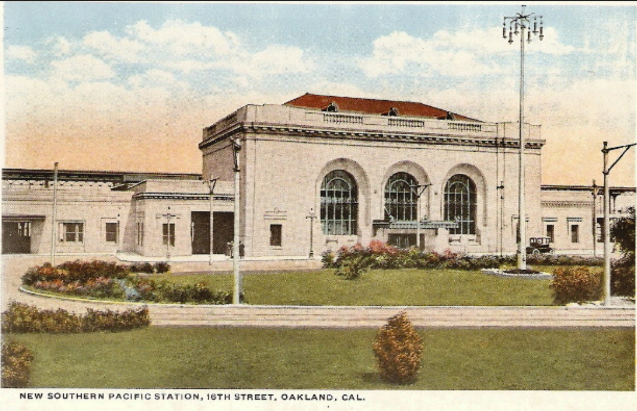16th Street Station in Oakland
A crumbling Beaux Arts monument

The crumbling station at 16th Street in Oakland is the last remaining relic of the Bay Area’s glory days of rail travel.
At one time, the city of Oakland was graced with three monumental train stations, greeting immigrants from the East to a new life in the Bay Area, and providing transport to locals on the area’s many interurban railways.
History

Built between 1910-1912, the 16th Street Station was once home to the Southern Pacific Railroad at ground level and the East Bay Electric Lines - also known as the Interurban Electric Railway (IER) - on the elevated tracks. The classically inspired Beaux Arts style building replaced an earlier, simpler wooden structure, and shows the marks of the growing “City Beautiful” movement that had begin a few years earlier. The movement encouraged the construction of sites of inspiring grandeur, designed to elevate the cities around them.
The Southern Pacific Railway was founded in San Francisco in 1861, and soon merged with the Central Pacific Railroad of the city’s famous Big Four railroad tycoons, Charles Crocker, Leland Stanford, Mark Hopkins and C. P. Huntington.
When the station was built, the tracks which ran along its side were at the waterfront (now massively infilled), and served as a secondary station to the city’s main station, known as the “Mole” and which served as the official end of the Transcontinental Railway. Ferries would pick up passengers for transit on to San Francisco. Located at the site of Middle Harbor Shoreline Park, the Mole was demolished in 1960.
The East Bay Electric Lines were added in 1914 and for a few years were notable for running along the lower deck of the Bay Bridge to San Francisco. The electric trains ran for 26 years.
The station began to decline with the overall decline in rail transport in the second half of the 20th century, and was badly damaged in the 1989 Loma Prieta earthquake, rendering it structurally unsound.
2007 Rave Disaster
A Haunted Train Station

